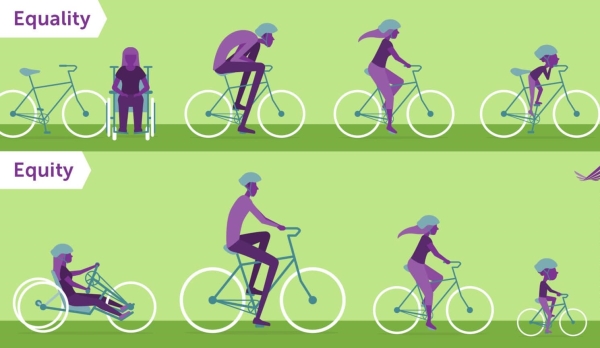WTS-Boston DEI In Motion: Transportation Equity

Transportation is a fundamental aspect of daily life, impacting how we access jobs, education, healthcare, and recreation. However, while everyone uses and relies on transportation, the effects of transportation systems are not felt equally across all communities. Equity in transportation goes beyond providing equal resources; it seeks to offer the same access to affordable, reliable, and efficient transportation for everyone, tailored to their specific needs.
The goal of transportation equity is to create systems that support multimodal options that are sustainable, safe, and easy to use. This means ensuring that quality transportation services are accessible to all populations, allowing people to reach their destinations independently if necessary. It also involves inclusive decision-making processes that engage diverse communities to address and reduce the long-standing socioeconomic disparities experienced by underserved and underrepresented groups, such as low-income individuals, minorities, seniors, children, people with limited English proficiency, and those with disabilities.
Achieving transportation equity involves understanding how different groups use public transport systems and identifying underserved groups and their specific needs. This can be done through data analysis, surveys, and community engagement. Increasing service frequency and coverage in underserved areas, improving physical accessibility, comfort, and safety for passengers of all ages and abilities, and making public transportation more affordable through subsidies or discounted fares are all critical.
Transportation equity also requires adherence to all components of Title VI, Environmental Justice (EJ), and non-discrimination policies. By considering these factors, we can work towards removing barriers that create transportation-related disparities and improving outcomes for historically marginalized communities.
Overall, transportation equity is essential for creating a fair and inclusive society. By understanding and addressing the diverse needs of all community members, we can develop transportation systems that provide equal access to all opportunities and services. Through thoughtful planning, community engagement, and adherence to key policies, we can work towards a future where transportation serves as a bridge rather than a barrier, fostering social and economic equity for everyone.
Sources and Resources:
- Equity | US Department of Transportation
- Transportation Equity | Mass.gov
- What is Transportation Equity? - Equitable Access to Transportation Systems - LibGuides at National Transportation Library
- DOT's Advisory Committee on Transportation Equity | US Department of Transportation
- Integrating Equity into Transportation: An Overview of USDOT Efforts | FHWA
- Home - TED (transitcenter.org)